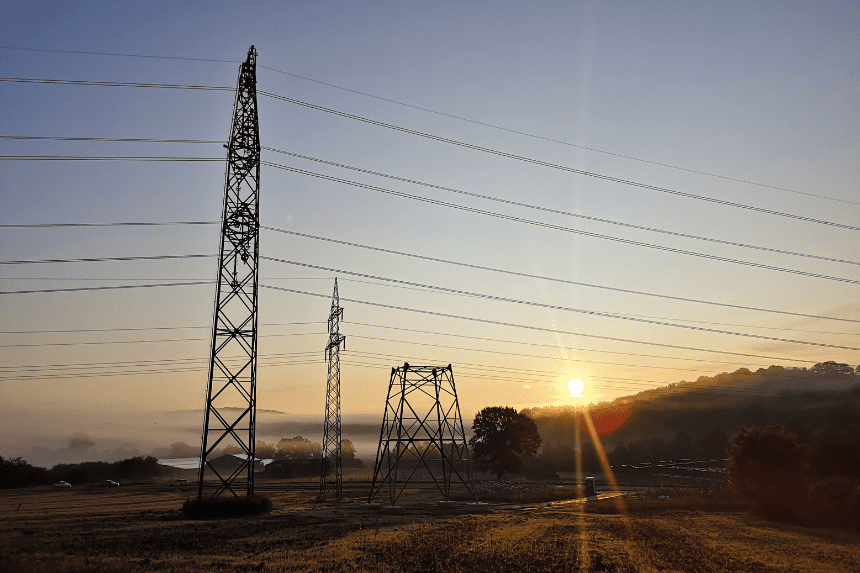Australia’s energy change marks a turning point for the country that will define its destiny and position in the world scene. For decades, the nation has mostly depended on coal to run its economy and satisfy its energy needs. Australia is now struggling, though, to shift to a cleaner, more sustainable energy future. Particularly in areas like the Hunter Valley, the issue of how to accomplish this change, whether through more reliance on renewable energy sources or using nuclear power, has generated significant controversy.
With its large mines and coal-fired power plants supplying employment and energy to the Hunter Valley, the area has long been the core of Australia’s coal business. But as the globe strives toward a more sustainable future, Australia’s energy transition is under more and more examination. The government’s aim of attaining net-zero emissions by 2050 has prepared the ground for this change, but juggling environmental objectives with financial reality is no simple chore.
Define the Energy Transition.
In Australia, the energy transition is the continuous change from fossil fuels, such as coal, to renewable energy sources like solar, wind, and, to a smaller degree, nuclear power. Australia’s commitment to lowering carbon emissions, as well as challenges from the global climate change response, guides this shift. A better energy mix is necessary, given that fossil fuels greatly contribute to greenhouse gas emissions.
Long among the top coal exporters in the world, Australia’s economy has been mostly dependent on the resource for electricity generation. Australia has committed itself to lowering its emissions and moving toward a low-carbon energy future, though the consequences of climate change become ever clearer. The challenge is therefore how to make this change while maintaining energy affordability and making sure communities reliant on coal for their way of life are not left behind.
From local communities and energy producers to government agencies and environmental champions, this energy change in Australia entails several players. Though every group sees the change differently, the main objective is the same: less reliance on fossil fuels and toward a more sustainable, renewable energy future.
The Place of Renewables in the Shift in Energy
The energy change Australia is undergoing revolves mostly around renewable energy. The nation boasts plenty of natural resources, including some of the best conditions for solar and wind power worldwide. Consequently, with the Labor party aiming high to reach 82% renewable energy by 2030, renewables have grown to be the pillar of the government’s energy plan.
Offering clean, renewable forms of energy that can drastically lower Australia’s carbon footprint, wind and solar power are seen as the long-term answers to its energy needs. Still, even if renewable energy has great promise, there are several difficulties. The main problems with solar and wind are their intermittency—solar energy only works during the day, and wind energy depends on weather conditions.
The Labor government has proposed a scheme to back up renewable energy with batteries and gas to handle this. Even when the sun isn’t shining or the wind isn’t blowing, large-scale energy storage systems like batteries are viewed as necessary to guarantee that renewable energy can offer dependable, on-demand power.
Critics of the proposal contend that despite the promise of renewable energy, some areas, like the Hunter Valley, may suffer major economic difficulties, and that the change may be too quick. Coal has long been the main source of employment and energy for many communities; however, there are worries that the drive for renewable energy could result in job losses without enough substitute possibilities. Read another article on Syria Amid Transition
Can Australia's energy future include nuclear power?
The possible influence of nuclear power is another important factor in the Australian energy change. Long a divisive topic in Australia, nuclear energy has been outlawed by the nation since the 1990s. But some have contended that nuclear might be part of Australia’s future energy mix as the country’s energy shift picks up speed.
To offset renewable sources, the Liberal-National alliance has suggested allowing nuclear power and funding nuclear energy projects. They contend that nuclear power is a low-emissions, dependable energy source that might help close the phase-out of coal’s gap with growing reliance on renewables. A good choice for energy security in the shift to renewable energy sources is nuclear power plants, since they can regularly and greatly produce a lot of electricity.
Still rather divisive, nonetheless, nuclear power is used in Australia a.Given events like Chernobyl and Fukushima, there are questions regarding the safety of nuclear reactors especially. Furthermore costly is establishing nuclear power facilities; the required infrastructure would take years, if not decades.
Waste disposal also presents a problem. Highly radioactive and remaining hazardous for thousands of years, nuclear waste requires careful, long-term handling. Many Australians still strongly reject nuclear energy, pointing to environmental issues and the great expenses involved in its development as justification. Furthermore, nuclear power is fiercely opposed at the state level; several of them have already decided against allowing the option of nuclear plant hosting.
Value of a Comprehensive Strategy
Australia’s energy shift has to be sensible and balanced. Although long-term solutions are renewable energy, nuclear energy could be very important in guaranteeing energy security during the transition period. Still, the road forward has to consider the financial reality experienced by towns depending on coal for jobs.
Affected communities must be helped in the transition to new businesses and energy sources if we are to guarantee that the change is fair and equitable. Retraining programs for employees, financial incentives to companies investing in clean energy, and making sure renewable energy projects like solar farms and wind farms are built in a way that helps nearby towns might all fall under here.
Reducing emissions as fast as feasible and limiting disturbance to the economy should also be priorities of a balanced strategy. Although nuclear could be part of the answer, the long-term objective should be to shift toward a renewable energy infrastructure backed by cutting-edge technology, including smart grids and energy storage.
Final Thought: Proceeding Through the Energy Transition
Australia’s energy shift offers possibilities as well as problems. The nation has to figure out how to go from coal to greener energy sources without endangering employment, energy security, or financial stability. Although solar and wind are mainstays of Australia’s future energy mix, nuclear power could also be important in offering consistent, low-emissions energy during the change.
Eventually, cooperation among all stakeholders—governments, business leaders, and local communities—will determine Australia’s energy transformation. Working together and emphasizing innovation and job creation can help Australia create an energy system not just cleaner but also more robust and reasonably priced.
Those who can reconcile environmental goals with sensible solutions will control Australia’s energy future. Whether it’s via nuclear power inclusion, renewable energy expansion, or new technology investment, the choices taken now will define the energy future of a nation for the next generations.








